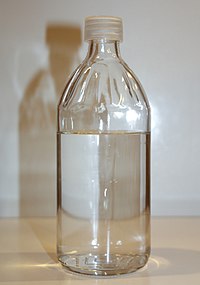
Photo from wikipedia
Unraveling the complexity of the lipidome requires the development of novel approaches to facilitate structural identification and characterization of lipid species with isomer-level discrimination. Ultraviolet photodissociation tandem mass spectrometry (UVPD… Click to show full abstract
Unraveling the complexity of the lipidome requires the development of novel approaches to facilitate structural identification and characterization of lipid species with isomer-level discrimination. Ultraviolet photodissociation tandem mass spectrometry (UVPD MS/MS) is a promising tool for structure determination of lipids. The sensitivity of UVPD for lipid analysis however is limited mainly due to weak absorption of UV photons by a C=C. Herein, a C=C site-specific derivatization, the Paternò-Büchi (PB) reaction, was used to incorporate a chromophore to the C=C moiety in fatty acyls, leading to significantly improved UVPD efficiency and sensitivity for pinpointing C=C locations. The wavelength-dependent photodissociation of the PB products demonstrated 4-CF3-benzophenone as the best reagent for UVPD in terms of the efficiency of generating C=C diagnostic fragments and simplicity for C=C location assignments. We demonstrated the effectiveness of this approach for the shotgun profiling of C=C location isomers in different lipid classes from complex lipid extracts, highlighting its potential to advancing the identification of the C=C bond locations in unsaturated lipids.
Journal Title: Research
Year Published: 2022
Link to full text (if available)
Share on Social Media: Sign Up to like & get
recommendations!